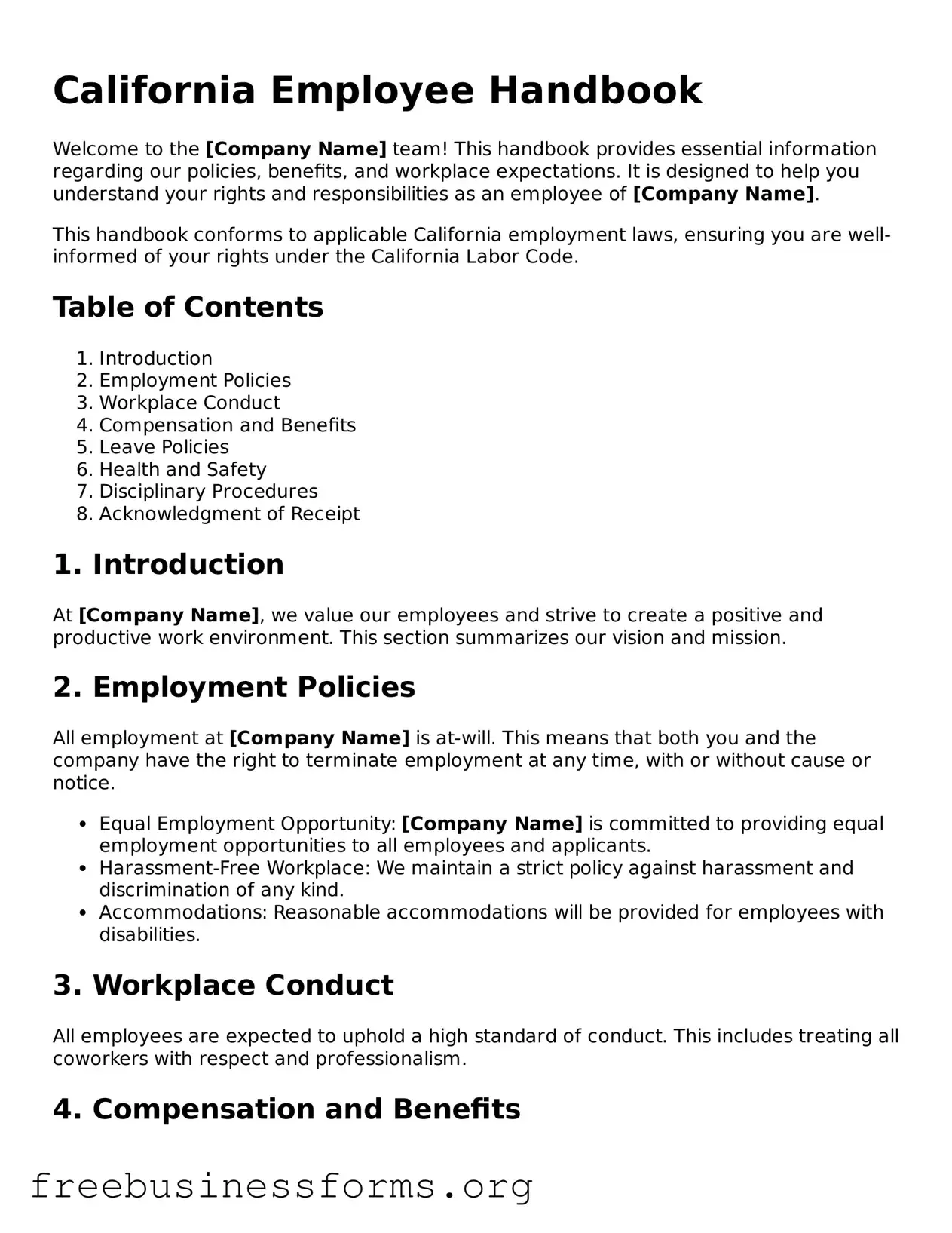California Employee Handbook
Welcome to the [Company Name] team! This handbook provides essential information regarding our policies, benefits, and workplace expectations. It is designed to help you understand your rights and responsibilities as an employee of [Company Name].
This handbook conforms to applicable California employment laws, ensuring you are well-informed of your rights under the California Labor Code.
Table of Contents
- Introduction
- Employment Policies
- Workplace Conduct
- Compensation and Benefits
- Leave Policies
- Health and Safety
- Disciplinary Procedures
- Acknowledgment of Receipt
1. Introduction
At [Company Name], we value our employees and strive to create a positive and productive work environment. This section summarizes our vision and mission.
2. Employment Policies
All employment at [Company Name] is at-will. This means that both you and the company have the right to terminate employment at any time, with or without cause or notice.
- Equal Employment Opportunity: [Company Name] is committed to providing equal employment opportunities to all employees and applicants.
- Harassment-Free Workplace: We maintain a strict policy against harassment and discrimination of any kind.
- Accommodations: Reasonable accommodations will be provided for employees with disabilities.
3. Workplace Conduct
All employees are expected to uphold a high standard of conduct. This includes treating all coworkers with respect and professionalism.
4. Compensation and Benefits
Your compensation is determined by your position and experience. [Company Name] offers a range of benefits including health, dental, and retirement plans.
5. Leave Policies
Employees are entitled to various types of leave, including:
- Sick Leave: California law provides for paid sick leave.
- Family Leave: Eligible employees may take family leave under the California Family Rights Act.
- Holiday Leave: [Company Name] observes the following holidays: [list of company holidays].
6. Health and Safety
Your safety is important to us. Employees must adhere to all health and safety guidelines set forth by [Company Name] and local government regulations.
7. Disciplinary Procedures
In the event of a policy violation, the following steps will be taken:
- Verbal Warning: A discussion regarding the violation.
- Termination: Further violations may lead to termination.
8. Acknowledgment of Receipt
Please sign below to acknowledge receipt of the California Employee Handbook and confirm your understanding of the policies outlined herein.
Employee Name: ______________________
Date: ______________________
